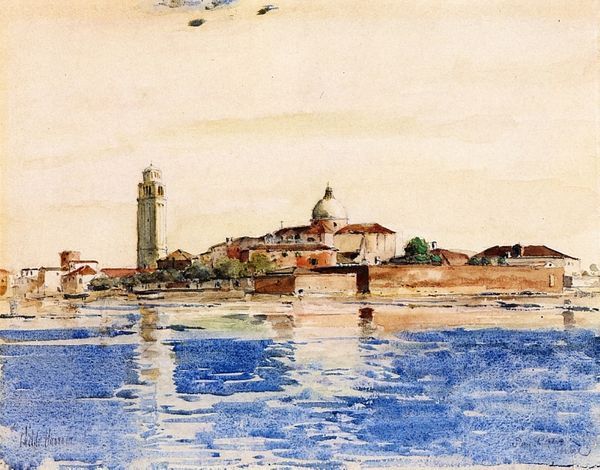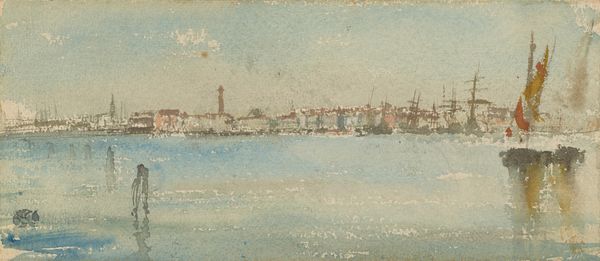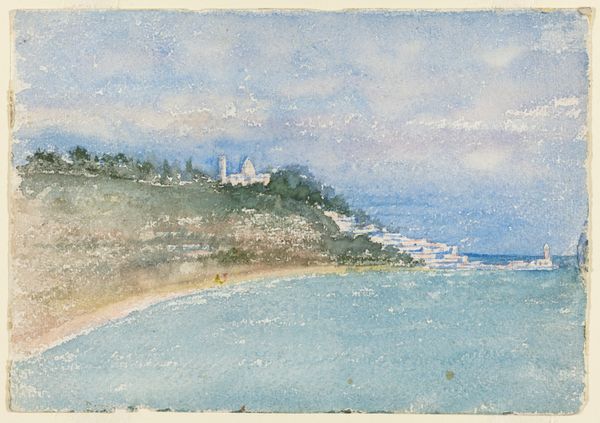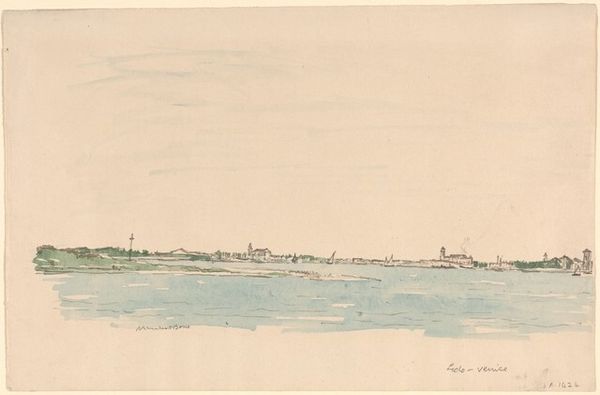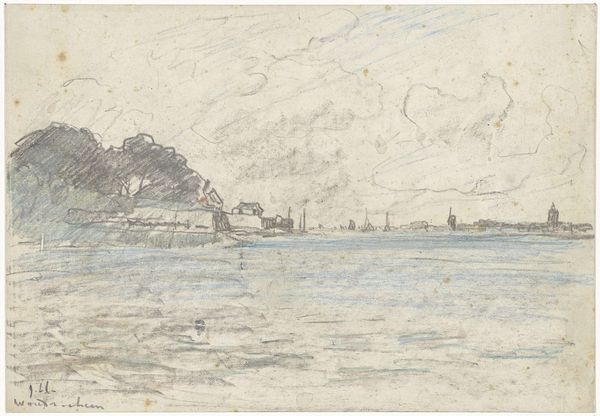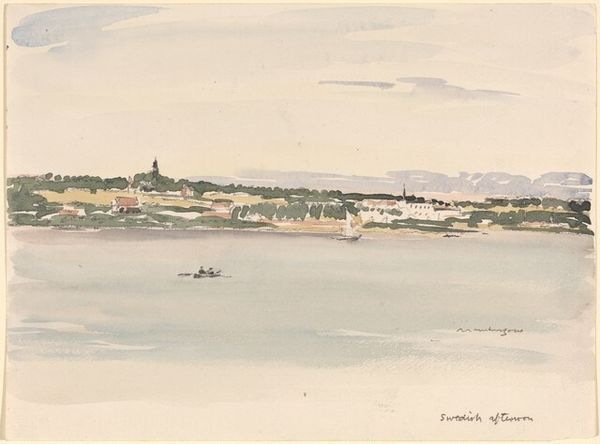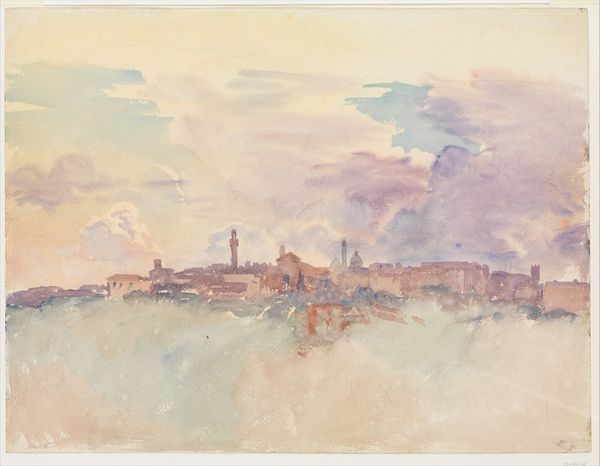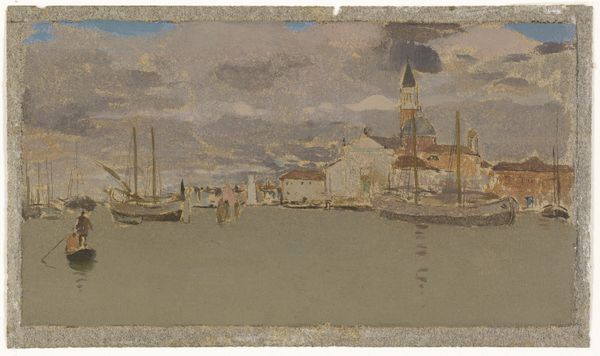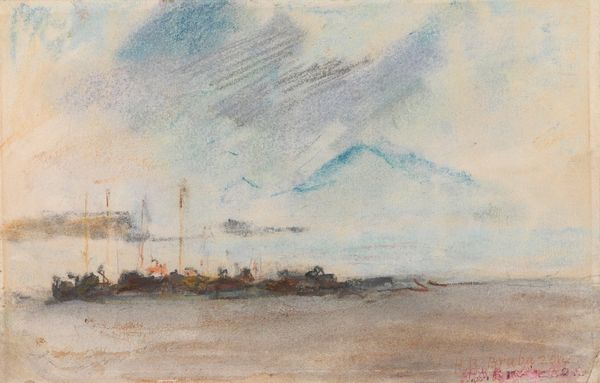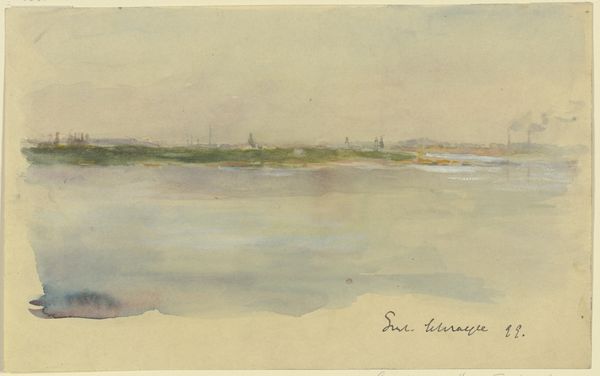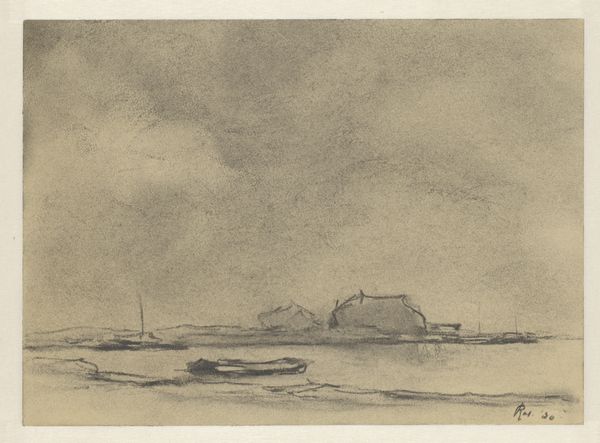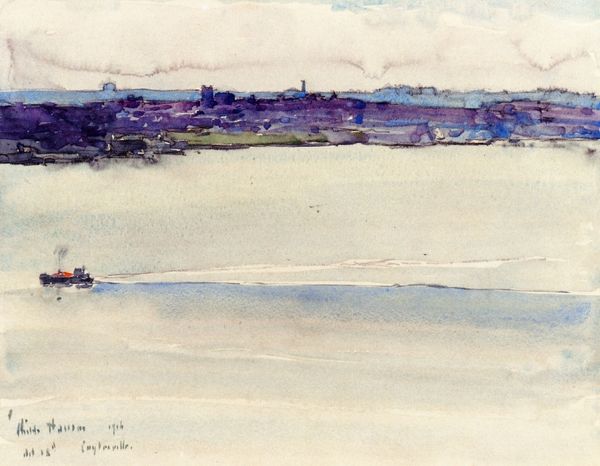
Sketch Taken at Algiers, North Africa, Travel Sketch 1896
0:00
0:00
Dimensions: 17.6 × 25.1 cm (6 15/16 × 9 7/8 in.)
Copyright: Public Domain
Curator: This delicate watercolor is entitled "Sketch Taken at Algiers, North Africa, Travel Sketch," created around 1896. It resides here at The Art Institute of Chicago. The artist is Daniel Hudson Burnham. Editor: It’s dreamlike. The washes of pale blues and creams evoke a feeling of serene detachment, like viewing a half-remembered coastline from a ship far out at sea. Curator: Burnham was an architect, and that discipline really informs his artistic choices here. He seems to have used the sketch primarily to carefully capture architectural and design features along the Algiers waterfront. Editor: Absolutely. Notice the high vantage point. Burnham chose to present this scene from a distance that establishes clear lines and divisions. The emphasis is very much on establishing control over the space. I can't help but wonder about how this reflects Burnham's position as a Western observer in a colonial context, carefully delineating the boundaries of his experience and control in a foreign space. Curator: The choice of watercolor, and the style overall, feels typical of travel sketches meant to swiftly capture a sense of place, time, and culture for an eager European audience. Editor: Though rapid, the illustration captures that quality of light that can only come from the coastal Mediterranean, right? However, it's difficult not to consider what's *not* shown. Who populates those structures? What’s their experience of this space? The almost clinical precision feels like a conscious attempt to sidestep those uncomfortable realities. Curator: True, and this aesthetic distance offers insight into the dominant power dynamics between Europe and its colonial holdings at the close of the 19th century, exposing how landscape art can obscure more than it reveals. Editor: Ultimately, this piece serves as a powerful artifact. We must learn how it embodies and, to some extent, sanitizes a particular historical viewpoint and power structure, as much as appreciating the skills of Burnham as an artist and architect.
Comments
No comments
Be the first to comment and join the conversation on the ultimate creative platform.
